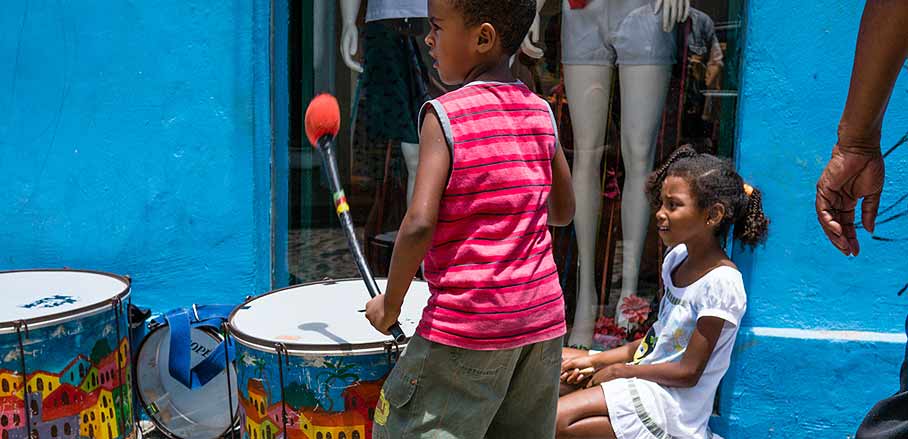6 Features That Make Brazil’s Affordable Housing Programme Good for People and the Environment
“Minha Casa, Minha Vida” (My House, My Life) is Brazil’s largest affordable housing project to this day. Priscila Pacheco describes the buildings’ sustainability features that benefit the residents and the environment.
Brazil’s Minha Casa, Minha Vida (MCMV – “My House, My Life” in English) programme was created to provide housing and improve quality of life for low-income families across the country. Currently, more than 9.6 million low- and low-middle income families reside in the programme’s condominiums, spanning rural and urban areas. Started in 2009 by Brazil’s federal government, MCMV has constructed approximately 2.2 million housing units in five years, and ranks as the largest affordable housing project in the history of the country.
MCMV began partly as a response to the rapid urbanisation Brazil has seen over the last few decades, which has outpaced investment in urban infrastructure and basic services. Indeed, roughly 85 percent of Brazil’s population currently lives in cities, with the highest rate of urban growth taking place in the 1950s and 60s. As Brazilians migrated to the cities, many struggled to find housing within their financial means and were forced into favelas or informal settlements to get by. MCMV’s goal is to help these low-income families find stable, affordable housing while promoting a sense of community.
While Minha Casa, Minha Vida works to provide housing for residents, it’s also a program that makes sustainability a priority. For example, in Juazeiro in the Bahia Hinterland, two condominium projects received solar panels that generate income and energy for nearly a thousand residents. Depending on location and context, various installments of MCMV are fitted with sustainable features that benefit residents and cut down on emissions:
Solar Water Heating
Nationwide, approximately 224,000 families have benefited from the programme’s solar water heating system for their showers. According to the Brazilian Association of Air Conditioning, Refrigeration, Ventilation and Heating, the systems can reduce home electricity bills by up to 30 percent. The installation of the systems will later be accompanied with information on how to reuse and conserve water at home.
Solar Power
More than 9,000 photovoltaic panels were installed in condos in Beach Rodeadouro and Address Salitre, in Juazeiro, Bahia. Together, the two project areas have the potential to supply up to 3,600 homes with electricity for a year. The panels also generate income by selling excess energy: between February 2014 and June 2015, the communities raised nearly 500,000 dollars. In terms of distribution, 60 percent of the income goes to the families living in the area, 30 percent is given back to the MCMV investment fund, and the remaining 10 percent is used to pay maintenance costs. With the additional resources, communities were able to invest in improvements such as a community center, bus stops, traffic signs and weekly medical consultations.
Biodigesters
Since 2014, the rural Minha Casa, Minha Vida projects have included biodigesters in the homes. The digesters allow residents to process organic matter like food and animal waste, and turn them into energy and fertilizers. Today, 335 families in Pernambuco, Bahia, Minas Gerais, Santa Catarina, Rio Grande do Sul and Goias have this technology in their homes; farmers in particular find them beneficial, and can use them to produce electricity, cooking gas and fertilize crops.
Sustainable Development
One of the components that make up the MCMV is the Desenvolvimento Integrado e Sustentável do Território (DIST – “Integrated and Sustainable Development of the Territory” in English). The initiative was designed to develop projects that promoted the health, environment, culture, communication, sports, leisure and professional training for low-income families. One example is the “Warriors Without Weapons” project in Santos, which welcomes children for cultural activities such as workshops, street theater and festivals.
Wooden Houses
In some projects within MCMV, buildings draw on the German method of construction involving wooden frames. The method reduces demand for labor by 75 percent and also minimizes the environmental impact of the construction by using renewable, raw materials.
Blue House Seal
In 2010, CAIXA (a Brazilian state-owned lender) established an environmental rating system for the banks’ housing projects to recognize the condos that adopted sustainable practices in their construction. Known as the blue seal, the symbol has 53 criteria for evaluation and six categories: urban quality, design and comfort, energy efficiency, conservation of material resources, water management and social practices.
This article was originally published in Portuguese on TheCityFix Brasil and in English on TheCityFix.
